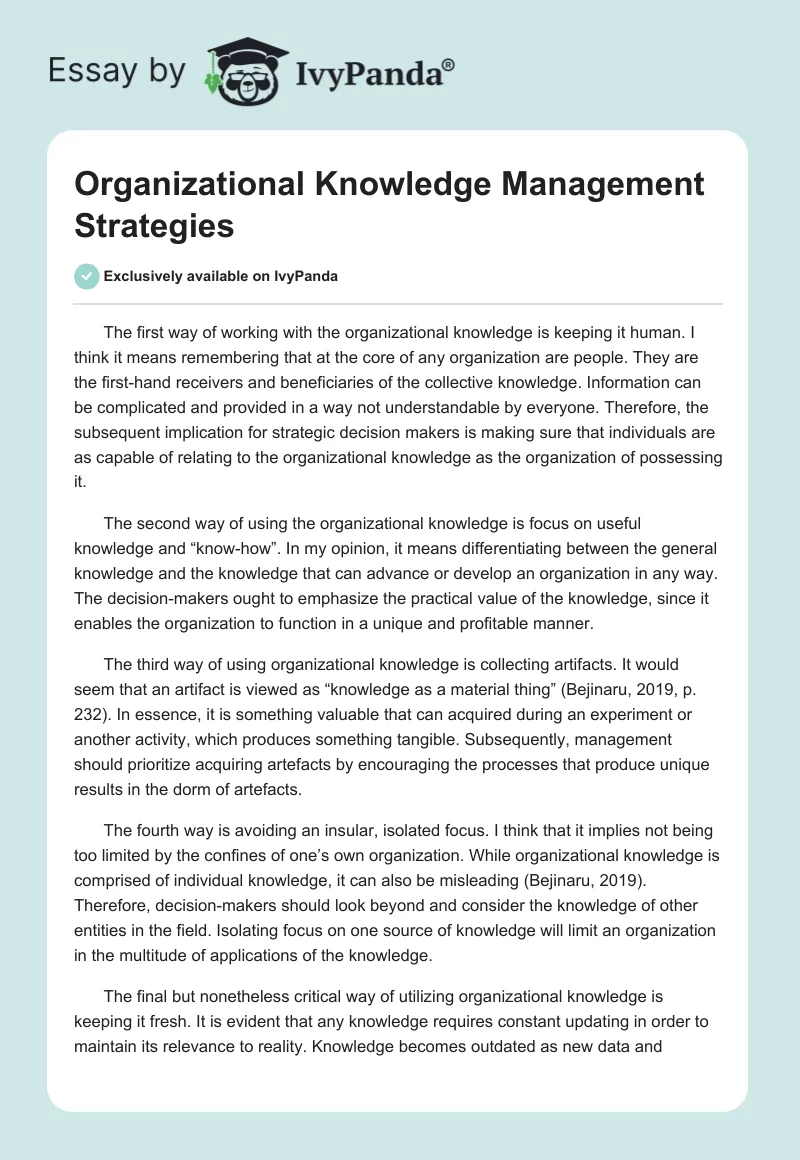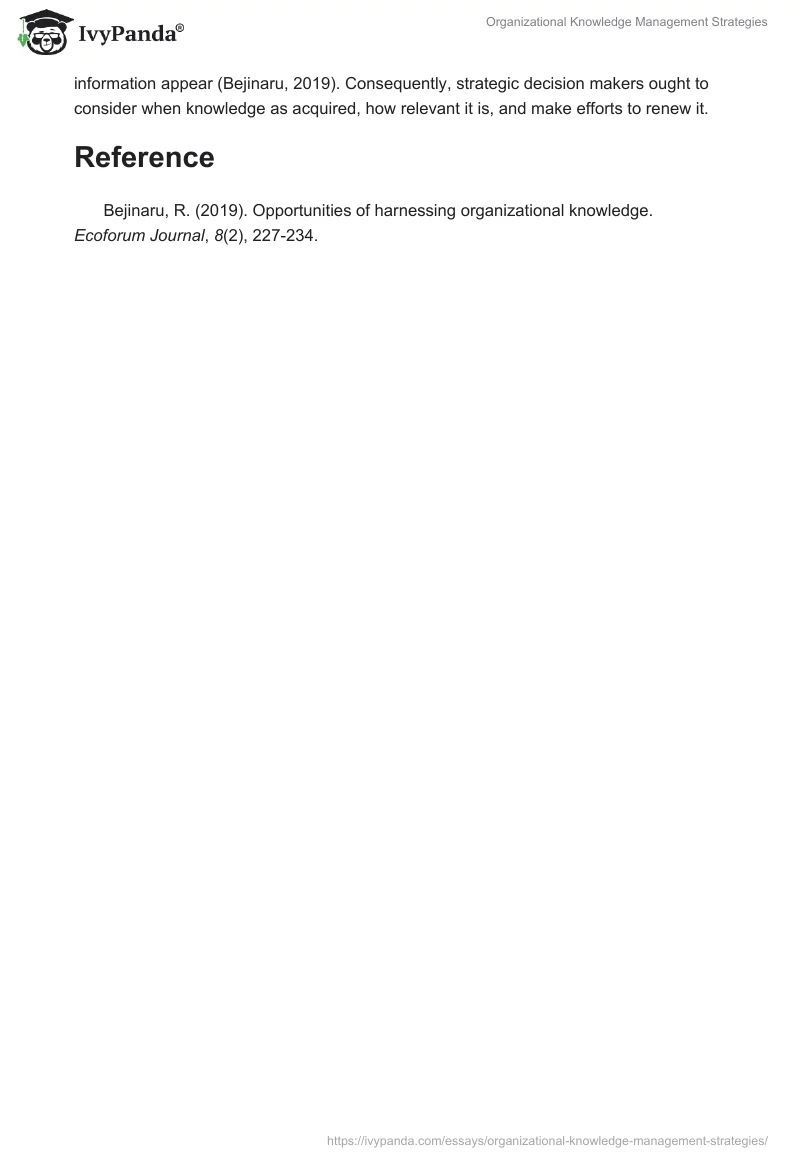The first way of working with the organizational knowledge is keeping it human. I think it means remembering that at the core of any organization are people. They are the first-hand receivers and beneficiaries of the collective knowledge. Information can be complicated and provided in a way not understandable by everyone. Therefore, the subsequent implication for strategic decision makers is making sure that individuals are as capable of relating to the organizational knowledge as the organization of possessing it.
The second way of using the organizational knowledge is focus on useful knowledge and “know-how”. In my opinion, it means differentiating between the general knowledge and the knowledge that can advance or develop an organization in any way. The decision-makers ought to emphasize the practical value of the knowledge, since it enables the organization to function in a unique and profitable manner.
The third way of using organizational knowledge is collecting artifacts. It would seem that an artifact is viewed as “knowledge as a material thing” (Bejinaru, 2019, p. 232). In essence, it is something valuable that can acquired during an experiment or another activity, which produces something tangible. Subsequently, management should prioritize acquiring artefacts by encouraging the processes that produce unique results in the dorm of artefacts.
The fourth way is avoiding an insular, isolated focus. I think that it implies not being too limited by the confines of one’s own organization. While organizational knowledge is comprised of individual knowledge, it can also be misleading (Bejinaru, 2019). Therefore, decision-makers should look beyond and consider the knowledge of other entities in the field. Isolating focus on one source of knowledge will limit an organization in the multitude of applications of the knowledge.
The final but nonetheless critical way of utilizing organizational knowledge is keeping it fresh. It is evident that any knowledge requires constant updating in order to maintain its relevance to reality. Knowledge becomes outdated as new data and information appear (Bejinaru, 2019). Consequently, strategic decision makers ought to consider when knowledge as acquired, how relevant it is, and make efforts to renew it.
Reference
Bejinaru, R. (2019). Opportunities of harnessing organizational knowledge. Ecoforum Journal, 8(2), 227-234.


